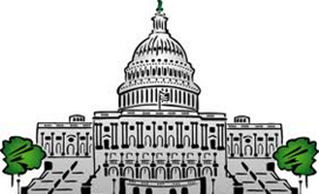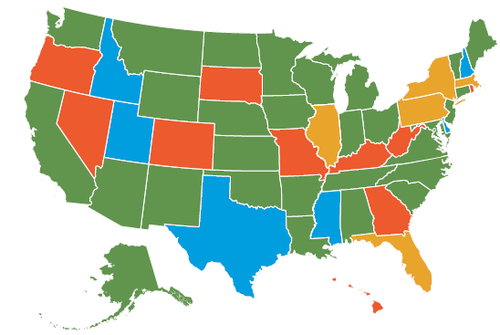While we haven’t served over 300 billion burgers like McDonald’s, we have provided something to digest each business day for over 43 months. We’re proud to announce that on Friday, eDiscovery Daily reached the 300,000 visit milestone! It took us a little over 21 months to reach 100,000 visits and just over 22 months to triple that to 300,000! On to 500,000!
When we reach key milestones, we like to take a look back at some of the recent stories we’ve covered, so, in case you missed them, here are some recent eDiscovery items of interest from the past six weeks.
After 2,354 Public Comments, One Major Change to the Proposed Federal Rules: By the February 15 deadline for the comment period, no less than 2,354 public comments had been filed regarding the proposed Federal Rules amendments. Much of the controversy related to Rule 37(e)(1)(B), which included a hotly debated amendment that the court may impose sanctions or order an adverse jury instruction, but only if it finds that the failure to preserve caused “substantial prejudice” in the litigation and was “willful or in bad faith,” or that the failure to preserve “irreparably deprived a party of any meaningful opportunity” to litigate the claims in the action. Since then, Rule 37(e) has been modified, not just once, but twice.
Government Attorneys Have eDiscovery Issues Too: From a confidence standpoint, 73% of respondents feel as confident or more confident in their ability to manage eDiscovery in their cases. But, 84% of respondents feel somewhat or not at all effective in their agency’s ability to deal with the challenges of eDiscovery and 80% of respondents feel somewhat or not at all confident that if challenged their agency could demonstrate that their ESI was “accurate, accessible, complete and trustworthy. These and other survey findings are available here.
Cloud Security Fears Diminish With Experience: According to a recent survey of 1,068 companies conducted by RightScale, Inc., concern about cloud security diminish as users gain more experience using cloud-based services. Learn more about organizations’ cloud habits here.
Daughter’s Facebook Post Voids $80,000 Settlement: As reported a few weeks ago on CNN, the former head of a private preparatory school in Miami lost out an $80,000 discrimination settlement after his daughter boasted about it on Facebook. That’s why it’s important to think before you hit send. Even if you’re still in grade school.
New California Proposed Opinion Requires eDiscovery Competence: If a new proposed opinion in California is adopted, attorneys in that state had better be sufficiently skilled in eDiscovery, hire technical consultants or competent counsel that is sufficiently skilled, or decline representation in cases where eDiscovery is required.
Predictive Analytics: It’s Not Just for Review Anymore: One of the most frequently discussed trends in this year’s annual thought leader interviews that we conducted was the application of analytics (including predictive analytics) to Information Governance. A recent report published in the Richmond Journal of Law & Technology (and discussed here) addresses how analytics can be used to optimize Information Governance.
How Do You Dispose of “Digital Debris”? EDRM Has Answers: Those answers can be found in a new white paper discussed here.
Also, hackers took Typepad, our platform for hosting the blog, down for a bit. But, we’re back and better than ever!
Want to get to know some of your litigation support colleagues better? Leave it to Jane Gennarelli, who has provided profiles here, here, here, here, here and here.
We’ve also had 11 posts about case law, just in the last six weeks (and 296 overall!). Here is a link to our case law posts.
Every post we have ever published is still available, so the blog has become quite a knowledge base over the last 43+ months. Sometime this summer, we will publish our 1,000th post!
On behalf of everyone at CloudNine Discovery who has worked on the blog and other publications that have picked up and either linked to or republished our posts, thanks to all of you! We really appreciate the support! Now, on to the next topic. 🙂
And, as always, please share any comments you might have or if you’d like to know more about a particular topic.
Disclaimer: The views represented herein are exclusively the views of the author, and do not necessarily represent the views held by CloudNine Discovery. eDiscoveryDaily is made available by CloudNine Discovery solely for educational purposes to provide general information about general eDiscovery principles and not to provide specific legal advice applicable to any particular circumstance. eDiscoveryDaily should not be used as a substitute for competent legal advice from a lawyer you have retained and who has agreed to represent you.









